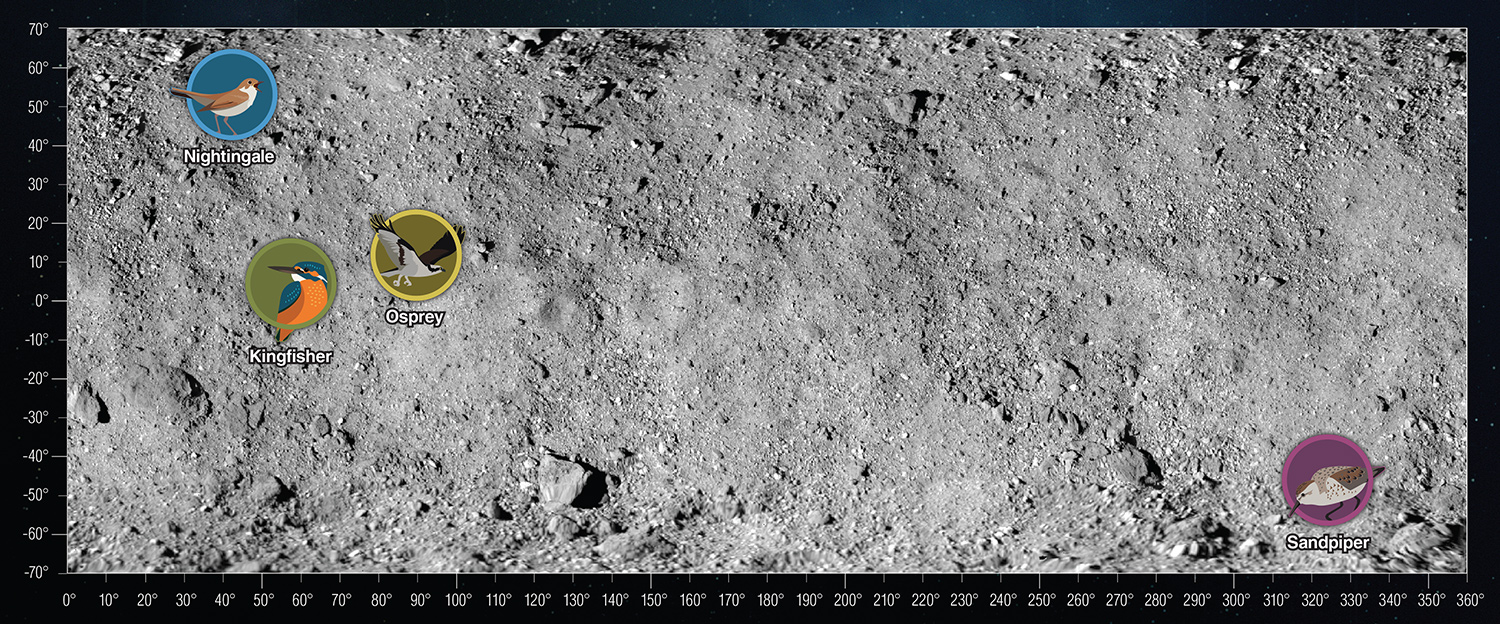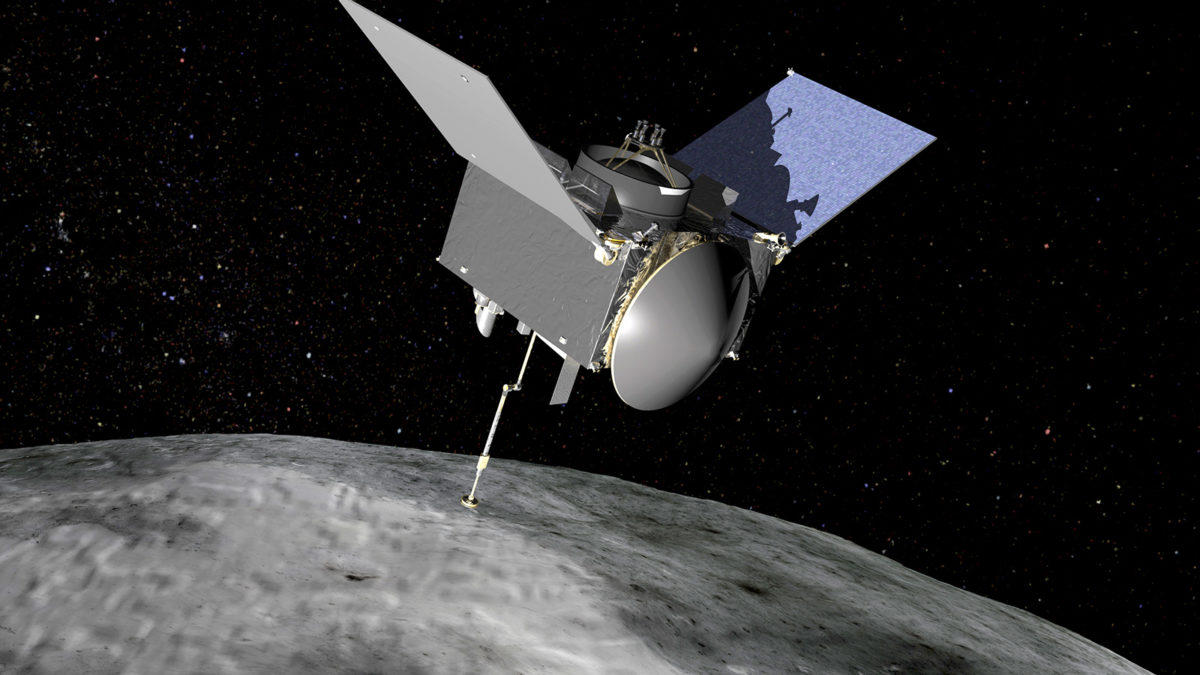NASA spacecraft will visit asteroid’s north pole for sample collection
By Cat Hofacker|December 12, 2019
Scientists adapt OSIRIS-REx to navigate the rocky asteroid
A 16-meter-wide sandy area in the north polar region of the near-Earth asteroid Bennu will be the site for NASA’s first asteroid sample collection attempt, the agency announced Thursday.
Japan was first to return an asteroid sample, when in 2010 the Hayabusa probe delivered less than a gram of particles to Earth after crashing during one of the collection maneuvers five years earlier. The Hayabusa 2 probe is scheduled to return an asteroid sample next year.
The NASA site, nicknamed Nightingale, was chosen by scientists after a yearlong survey by the OSIRIS-REx spacecraft, which beamed home images of Bennu shortly after arriving in orbit around it in December 2018. NASA scientists pored over the images and chose the polar region and specifically Nightingale from four areas on what appears to be a carbon-rich surface.
“We made our final decision based on which site has the greatest amount of fine-grained material and how easily the spacecraft can access that material while keeping the spacecraft safe,” said Dante Lauretta, OSIRIS-REx principal investigator at the University of Arizona in Tucson, during a livestream from the American Geophysical Union conference in California. When the probe first arrived at Bennu, scientists expressed surprise at the boulders in the images. They grew worried that OSIRIS-REx’s sampling mechanism could be damaged when it attempts a series of “touch-and-go” maneuvers to lift dusty regolith off Bennu, or that those particles might prove to be too large to capture.
Plans call for OSIRIS-REx to descend toward the surface of Bennu in July and unfold TAGSAM, short for the Touch-and-Go Sample Acquisition Mechanism. Built by Lockheed Martin, TAGSAM consists of a circular sampler head attached to a robotic arm that raises and lowers the head from the spacecraft.
Once the head touches the surface of Bennu, a burst of nitrogen gas through its outer ring will stir up the regolith, sending the fine material swirling into TAGSAM. After five seconds, the spacecraft will raise itself back to orbit, and the arm will fold TAGSAM back up and place the head inside a capsule on the side of OSIRIS-REx.
Out of all the areas surveyed for this sample collection, Nightingale “best ensures mission success,” Lauretta said. Located in a 70-meter-wide crater in Bennu’s north polar region, Nightingale had the “most scientific value” of all the sites OSIRIS-REx surveyed, Lauretta said. Along with the “relatively smooth” surface of the crater that will make landing the spacecraft easier, the colder temperatures will “better preserve” the regolith OSIRIS-REx will collect.
But the location is not without challenges. Lauretta described a “large wall of tall rock” on the eastern side of Nightengale’s crater that “may tip over a little bit” if the OSIRIS-REx spacecraft touches it during its descent.
“We recognize this [site] does have some hazards around it,” he said.
To help OSIRIS-REx whisk off samples safely, the team uploaded “hazard map” software to the spacecraft, said Mike Moreau, OSIRIS-REx deputy project manager at NASA Goddard Spaceflight Center in Maryland, which is overseeing the mission. If the spacecraft detects that it’s come too close to a boulder or cannot safely land to collect the sample, “it will back away and try the sample collection again.” OSIRIS-REx has three tries to collect regolith, he said, and TAGSAM can hold up to 2 kilograms of samples, about the weight of a chihuahua.
Following sample collection, the spacecraft will orbit Bennu until March 2021, at which time it will head back to Earth. The sample should reach NASA scientists by 2023, a date that’s eagerly awaited by Lori Glaze, director of planetary science at NASA Headquarters in Washington, D.C.
Scientists have been observing Bennu for 20 years with ground-based and space-based telescopes, but “there really is no substitute to being able to pick up some of that material from the surface and bring it back to Earth,” Glaze said.
NASA and university scientists will analyze some of the regolith, but most of the samples will be preserved for “generations to come,” she said, similar to the lunar samples from the Apollo moon landings that “we’re still analyzing today 50 years later.”
Related Topics
Space Science





